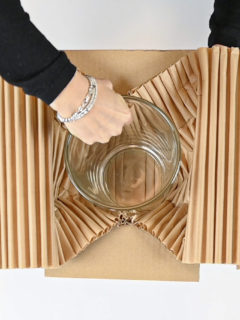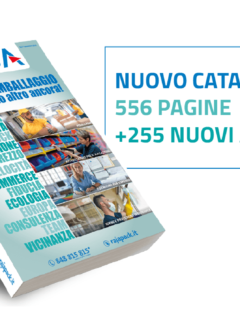The right packaging will protect your products during shipment, but there is another key element that will ensure that they arrive correctly at their destination: the label. When you ship, domestically or internationally, with the correct labels, you minimise damage and accidents .
There are a multitude of them available: from simple instructions for use such as indicators and hazard warnings, to adhesive document envelopes for invoices and delivery notes.
Here are the main types of labels and some tips!
► International Shipments
Whenever you make a shipment, you must clearly state the recipient’s name and the sender’s address. The correct address will ensure a fast and safe shipment. Place the address label in a visible place so that it is easily accessible and identifiable by the courier. If you use the label provided by the courier, be sure to follow their instructions.
If the shipment is outside the European Union, your parcel will have to pass through customs and therefore must include a complete customs form. Also, keep in mind that there may be additional import fees to pay based on the information included in the form.
You can find all the necessary information on procedures on the website of the Customs and Monopolies Agency.
► Where to attach labels?
Remember to stick them on carefully to prevent them from coming off during transport and, if necessary, to use an adhesive document envelope to include the documentation that must accompany the shipment: invoices, delivery notes, instructions, etc.
It is advisable to attach the shipping labels to the top of the boxes because this way it is more likely that the package will be arranged vertically during transport.
Excess can also be confusing, so figure out what information is needed and eliminate old labels that can cause confusion.
Do not place a label on a fold or in a corner, if there are barcodes, it may be illegible.

► Which labels do your parcels need?
Which ones should be used for perfect shipping?
Adhesive document envelopes
Wherever your parcel goes, you must ensure that it includes all the necessary documentation.
Your documents are safe with adhesive envelopes because they adhere to any type of box, cardboard or material. They are water- and oil-resistant, do not tear and do not deteriorate during transport.
Want to reduce your environmental impact? Try the eco-friendly document envelope with ‘documents enclosed’ printing in 60% recycled polyethylene film, glue produced 70% from renewable materials and biodegradable ink.

Sign and marker labels
They serve to give clear instructions to anyone who has to handle the parcel. It is very important to use them when the goods you are transporting have special characteristics.
Some of the messages available are:
- Fragile
- Do not fold
- Handle with care
- This package contains the delivery note
- Moisture resistant
- High/Low
- Do not stack
- Package to be checked when unloading
- Mixed package
- Perishable

Dangerous Goods Labels
If you ship flammable, chemical, toxic or corrosive materials, you should add labels for the transport of hazardous materials. This helps to ensure that the package is handled and transported safely and that no accidents occur.
It is important that the label is perfectly intact and visible!
Each pictogram stands for a different message such as flammable gases, toxic materials or environmentally hazardous materials. Choose it with care!

Indicators
This particular type of label is perfect if you are transporting goods that are sensitive to shocks and tipping over. In particular, Shockwatch indicators allow you to recognise immediately if the parcel has suffered shocks or has been dropped. Tiltwatch indicators, on the other hand, turn red if the package has been tilted by at least 90°.
They are both moisture-resistant and suitable for export abroad, and adhere to wood, cardboard and plastic.
Finally, for sensitive electronic products such as printed matter, computers or mobile devices, it is a good idea to affix a label for electromagnetic-sensitive equipment to the parcel so that it is handled correctly.

Self-adhesive labels
If you are sending small packages, such as envelopes or shipping letters, a label indicating the correct address is sufficient. You can write on the label manually or use a printer. That way it will be clear from the start who the sender and recipient of the parcel is.
Thermal labels
Thermal labels are practical and durable.
You will need a label printer to make them.
Printers of this type are small and space-saving, but don’t let the size fool you – they can print up to 71 labels per minute!
They connect directly to a PC or Mac and come with free printing software.
Label sizes also vary, you can print almost anything from postal addresses, shipping or postage labels, price stickers and product labels, including barcodes.
Thermal printers are fast, practical, easy to use and inexpensive.

Personalised adhesive labels
Want to print a special message or your logo on labels? Contact us. You can customise coloured, square, oval, rectangular and cardboard labels. Give free rein to your imagination!













